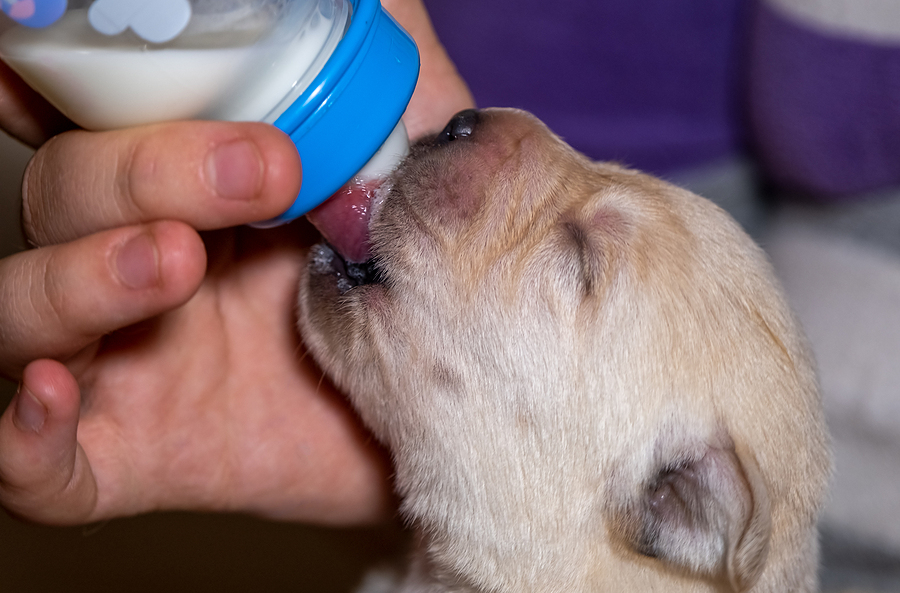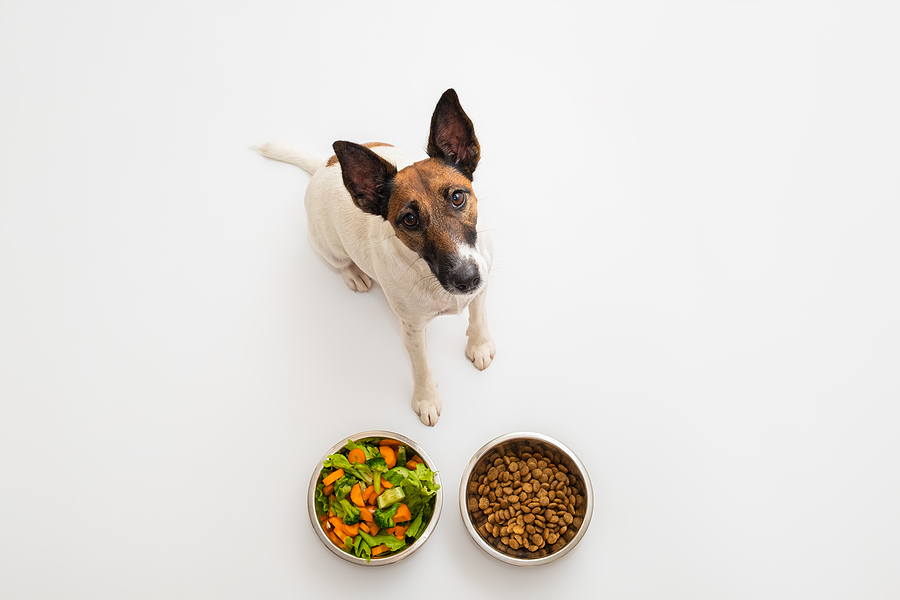Congratulations! You just got yourself a new puppy. When you’re finished admiring your adorable little friend, the panic starts to set in. “Is my puppy hungry? What do I feed them and when?” Before you start spiraling about whether you need to feed your puppy solid food yet, take a deep breath and relax. We are going to help you create the perfect puppy diet plan! Let’s get started.
Mighty Milk
When your puppy is first born, you won’t have to worry about feeding them for the first four weeks. They will get all the milk they need from their mother. This way, they will develop strong bones, muscles, and brain cells as they grow.
However, if their mother is out of the picture, you should be using a formula specifically made for puppies. Bottle feed your puppy every 2 or 3 hours. When they get closer to the 2 to 4-week mark, you can dial it back to every 6 to 8 hours.

Weaning Time
Around week 5, you should start weaning your puppy. Grab the commercial kibble food of your choice (something well balanced!) and soften it with water or broth. This will create a mushy texture that’s perfect for weaning puppies.
Remember: all puppies are different! So the exact timetable for weaning is up to your unique puppy. If you look at your dog and not the dish, you’ll set yourself up to puppy diet plan success.
Food is Your Puppy’s New Best Friend
From 6 weeks onward, your puppy is ready to chow down on some real food! In order to give them the proper nutrition, you’ll want to seek out puppy food that is rich in high-quality protein.
Quick science lesson! Your puppy will also need fat and carbohydrates to supply all the energy they’ll need to keep active and playful. Additionally, they’ll need calcium to support their growing teeth and bones.
The Formula for Success
In terms of which puppy formula you should use as part of your puppy diet plan, it’s important to consider the size of your puppy’s breed. If your puppy is a Great Dane, they will benefit from a large breed-specific puppy formula. On the other hand, if your puppy is a Maltese, a small breed-specific puppy formula would be the best option. These size-specific formulas will give your puppy the nutrients they need for proper development.
Consistency is Key
Whatever you choose to feed your puppy, it’s crucial to keep your puppy diet plan consistent when it comes to portion size and mealtime. Between 3-6 weeks, your puppy should be eating no more than four meals a day. Metabolism varies from pooch to pooch. Just keep a steady eye on how much your puppy eats before moving onto more exciting things like chasing toys. If your puppy skips a meal or doesn’t eat everything in their bowl, don’t worry! Just adjust your diet plan accordingly.
You may also want to consider decreasing the number of puppy-portioned meals a day from four to three. This will allow them to shed their puppy potbelly around the 6 to 7-month mark.

The Great Changeover
Your puppy diet plan is almost over! Between 6 to 12 months, it’s time to make the switch from puppy food to adult dog food. The exact timing of this changeover depends on your specific dog breed. Smaller breeds generally make the switch at 7 or 9 months while larger breeds transition around 12 or 14 months. Regardless, your puppy should be eating 2 meals a day at this point.
Goodbye Puppy Diet Plan, Hello Dog Diet
The bittersweet time has come. At between 1 and 2 years old, you won’t have a puppy anymore. Your full-grown dog should be eating two half-portion meals a day. Celebrate the occasion by giving your pup a tasty treat. Just remember the 90/10 rule: 90 percent of their calories should come from their balanced dog or puppy diet plan while the other 10 percent can come from treats. Your dog will thank you later.
You Deserve a Reward Too!
After successfully creating the perfect puppy diet plan, we have a treat for you! Beau’s K9 Academy offers plenty of training programs for your furry friend. Sit back and relax while our experienced trainers teach your dog some new tricks with our board and train program. Give us a call today to learn more!

